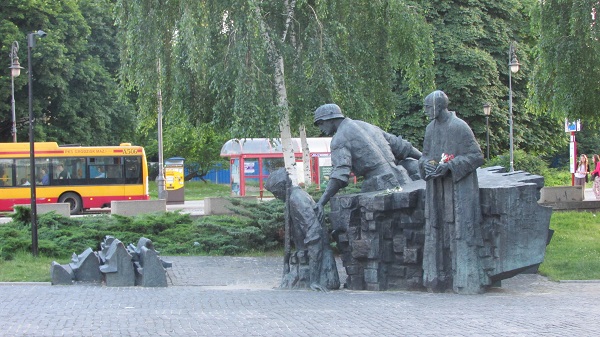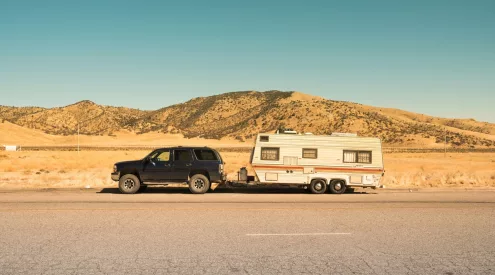When planning your holiday you aren’t likely to put memorial sites, prisons, battlefields or places of struggle and other atrocities on the top of your list. We usually look for the prettiest places to visit, the natural wonders, or the best places to get in tune with the locals. We don’t always schedule in time for the ‘darker’ side of the places that we visit (although that depends: what kind of tourist are you?)
Some cities are all about the good, the beautiful and the interesting with a bit of history sprinkled in between. Then there are other cities that are full of dark history, struggling times, horrific stories and lessons learnt the hard way. These specific spots can be referred to as ‘dark tourism’, ‘black tourism’ or even ‘grief tourism’.
Call it what you may, but these are the places that make you feel uncomfortable, the places that take you out of your comfort zone and give you a harsh slap into the realities that many people have had to live through. You don’t really want to go there, yet you know you should.
Some ‘dark tourism’ spots
There are quite a few ‘dark tourism’ places around the world including the Hiroshima Peace Memorial Park in the centre of Hiroshima, Japan. Hiroshima was the first city in the world to suffer a nuclear attack, this memorial is dedicated to the bomb’s direct and indirect victims. The park was built on an open field that was created by the explosion, so you are literally standing in a spot that you would have died in if you had been there that day. You will find a number of memorials and monuments, museums, and lecture halls in this area: recounting the attack and the results of the attack.
The Auschwitz concentration camp in Krakow, Poland is an extremely daunting ‘dark tourism’ spot. It is a network of concentration and extermination camps used in World War II. Auschwitz has become a symbol of terror, genocide, and the Holocaust. It is the place where more than 1 000 000 men, women and children lost their lives in the most dreadful circumstances. Today you can take a tour of the camps, see the conditions that they lived in, hear the stories of death and feel the uneasy air in the area.
The Tuol Sleng Genocide Memorial in Cambodia is the site is a former high school which was used as the notorious Security Prison 21 (S-21) by the Khmer Rouge regime from its rise to power in 1975 to its fall in 1979. More than 20 000 prisoners were killed in here. At this museum you can see how the prisoners lived, and learn more about the torture and extermination at the prison. Several of the rooms are lined from floor to ceiling with photographs of the prisoners.
South Africa has its fair share of ‘dark tourism’ spots, including Constitution Hill in Johannesburg. Constitution Hill was originally Old Fort high security prison which was first used during the Anglo Boer War (1899-1902). It later added in the ‘native prison’ and the women’s jail. This prison detained many pro-democracy leaders including Nelson Mandela and Mahatma Gandhi. Today Constitution Hill can be seen as a symbol for freedom, by recognising the past. When visiting you don’t only learn more about the prison itself but more about South Africa’s path to freedom and democracy.
Why it’s important to visit
I’m the first to admit to wanting to live in a happy bubble, a place where the world is full of butterflies and smiles. But that, unfortunately, is not reality. The world can be a horrible place. People have suffered in the most appalling ways in the past, and the best way to make sure that such terrible events don’t happen again is to face them head on.
To remember what happened and to learn from the past, is the best way to honour the people who suffered. That is, after all, why in the places where these ‘dark’ events occurred there are memorials and museums documenting what happened.
You also need to understand the history to understand the present. Learning about the terrible things that a city had to go through makes you truly appreciate the city today.
I was in Berlin earlier this year and developed such a deep respect for the city after going on a tour that highlighted the horrors of World War II and the Berlin Wall. When you are physically standing in the spot next to the Berlin Wall where people died, where people were separated from their families and where soldiers patrolled, you get a sense of unease that you would never get from reading about it in books. While you can never really know exactly what it was like, you do get a better sense and a much better understanding and respect.
I had a similar experience in Warsaw, Poland. After visiting the Warsaw Uprising Museum, and seeing the various memorials spread around the city I couldn’t believe that I was actually standing in the same city that went through so much. The Warsaw that you will find today, is not the Warsaw that was there before World War II. The city was basically in complete ruins. Yet today it is one of the most thriving cities in Poland. It really is amazing. And I know that I would never have developed such an appreciation for the city and the fact that there actually is a Warsaw, if I hadn’t visited that museum.
If you want to truly experience every city that you visit, to understand its history, its people and how it became the city that it is today, you need to face these harsh truths. You need to delve into the sad, horrifying, unbelievable, disgusting, and very uncomfortable stories of the past. You definitely won’t enjoy it, but it will enrich your travel experience in so many ways. At the very least it will get you to appreciate what you have.



















